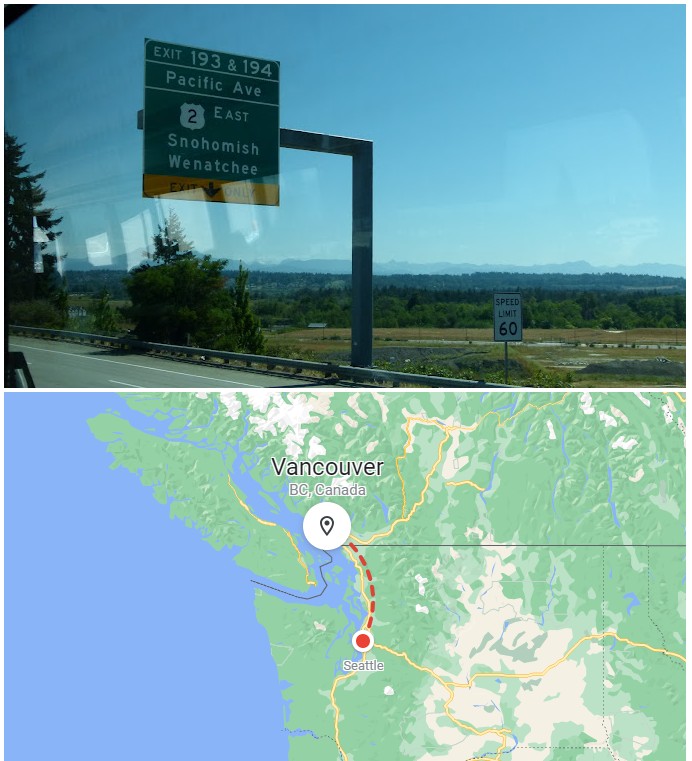
We spent most of our first afternoon walking over to the Museum of Vancouver and, after looking at the exhibits, walking back for coffee, near our hotel.
The Museum explains that this was/is aboriginal land and shows how sophisticated the inhabitants were, with some very finely crafted stone tools.
In a later gallery we learn that Vancouver, like Sydney went through planning protests to arrive at today's very liveable compromise.
The following day we took a bus trip into the suburbs only to be deterred from going further by the first heavy rain they had had for some time. We even encountered a camera-crew filming the rain for the local news.
When the rain stopped, we hopped off the bus, down by the bay, and walked to a coffee shop where horse drawn wagons carried people around the park, before another long walk back.

To call Vancouver the Paris of North America would be to insult Vancouver. We were most impressed.
On our final day here we picked up a (pre-ordered from OZ) car to drive across the Rockies to Calgary. On the way we would collect our friends Brian and Kat, so we needed plenty of luggage space.
